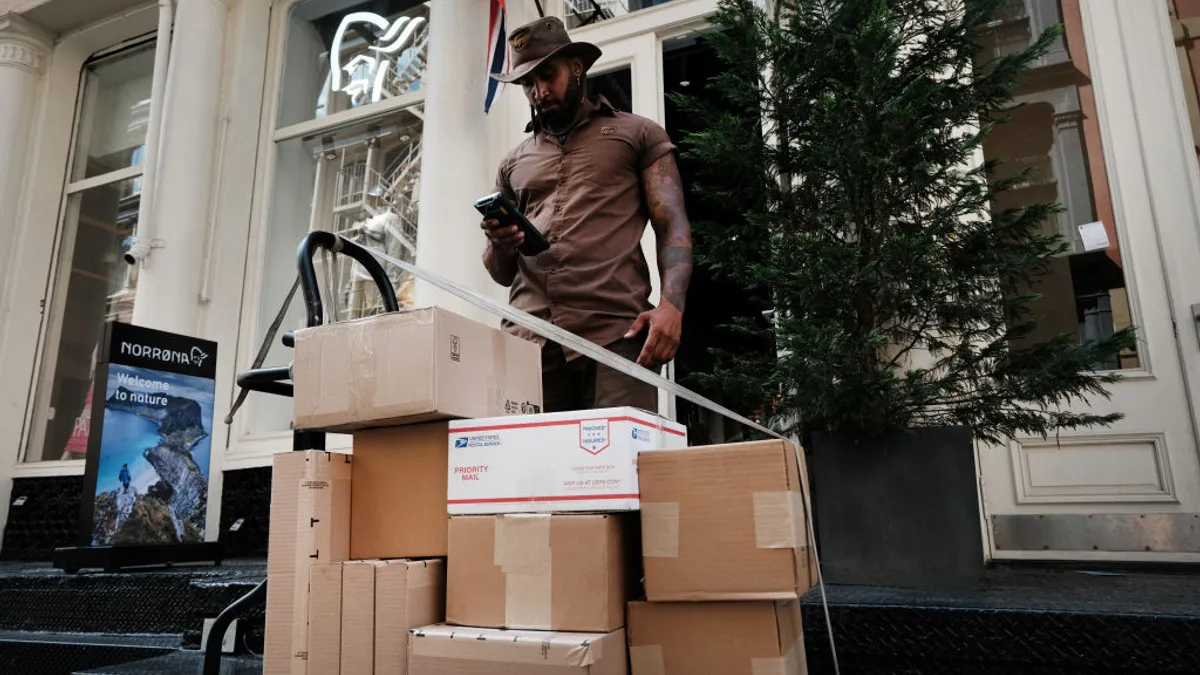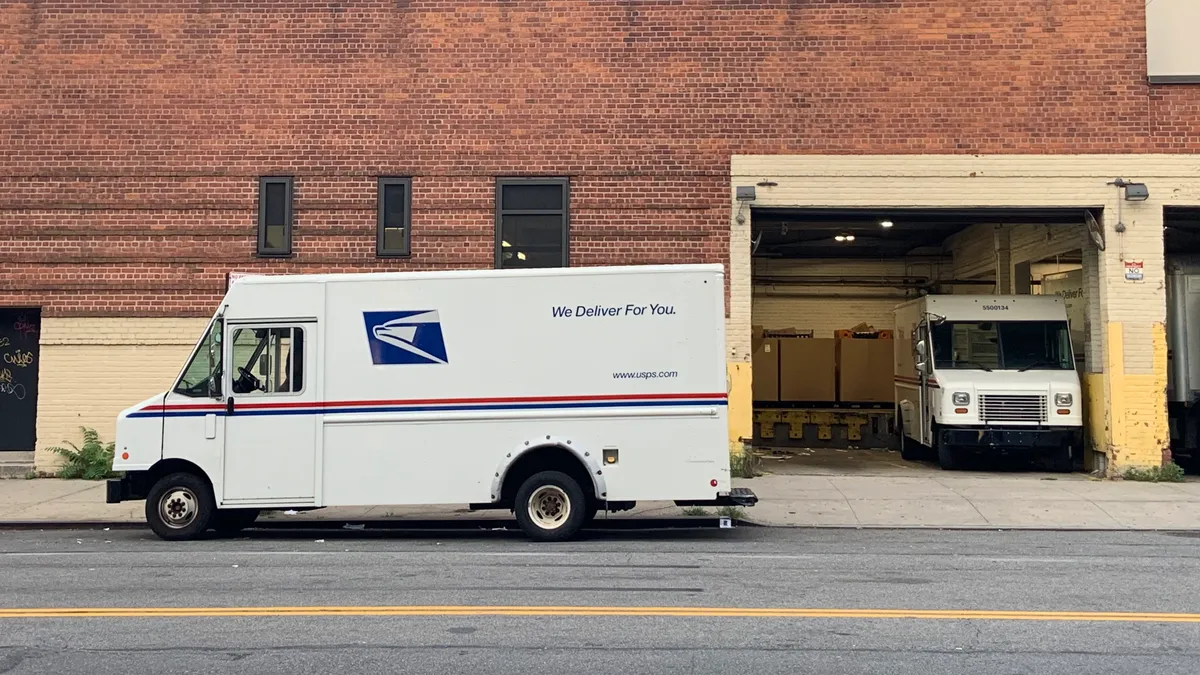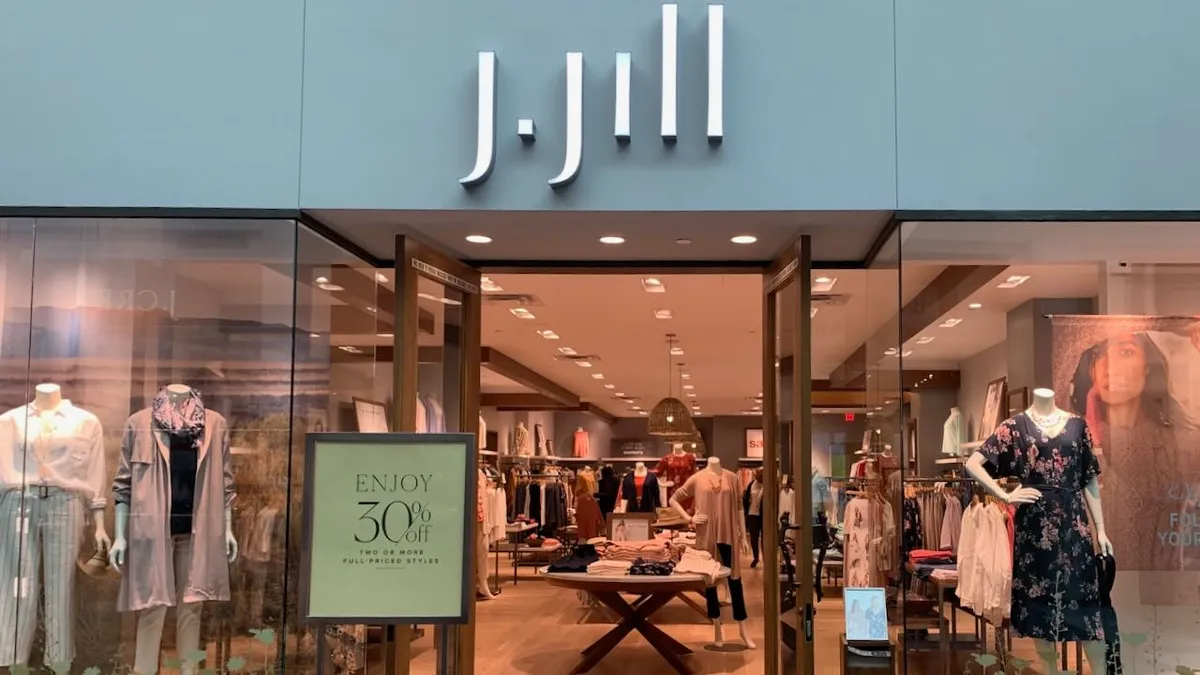Wayfair executives were a bit overzealous with hiring, they admitted on a Friday earnings call. Earlier this month, local Boston media described dramatic scenes of Wayfair layoffs, 100 at a time. The Boston Globe reported the company had put in place an entry-level hiring freeze in November.
Analysts dismissed the layoffs as not terribly significant. The layoffs totaled 550, about 3% of Wayfair's total workforce of 17,000 employees.
Wayfair executives on the call said the retailer was headed into a period of renewed discipline after years in unbridled building. But one area it won't dial back is logistics.
Wayfair operates 16 million square feet of warehouse space. It runs a consolidation and drayage operation in Asia. Its large-format last-mile delivery facility count rivals that of Amazon, allowing it to offer free 2-day shipping on most items. But its logistics didn’t always operate this way.
The 17-year-old home decor and furnishings retailer, comprised of its eponymous e-commerce site along with Joss & Main, AllModern, Birch Lane and Perigold, started out as a drop-ship dependent business. Wayfair orders were fed directly into suppliers’ warehouses and the e-tailer would arrange delivery logistics from there to the customer via third party carriers.
So how did a drop-ship model morph into a considerable logistics force in the world of e-commerce? According to the founders, they knew early on drop shipping would not ultimately be the dominant fulfillment model.
Wayfair’s 2017 SEC filing explains home goods have a low value-to-weight ratio — meaning the shipping cost to revenue metric is quite unfavorable. This is especially true since Wayfair targets consumers looking to spruce up a room and not necessarily redesign it all at once, as Wayfair CEO and Co-founder Niraj Shah has described in multiple speaking engagements. In other words, the purchases from a single address are not likely to fill a truck. Controlling delivery costs is key to the company’s fate in the eyes of the founders.
Instead of sticking to its original low-overhead model (low risk, low reward, right?), the company set out to move merchandise itself. Today, Wayfair operates a vast warehouse network controlling, at least in part, inbound and outbound logistics. After years of build-out it now handles 31% of small parcel sales (averaging 30 pounds) and 21% of large parcel sales (averaging 80 pounds) through its middle-mile operation, according to executives speaking on an earnings call. And 70% of large parcel sales go through Wayfair's last-mile network.
Building middle-mile capacity
In the early days, before Wayfair built out its middle-mile network, CastleGate, vendors often shipped to consumers directly from their factories, mostly in Asia. CastleGate is the network that allowed those suppliers to put their wares in Wayfair’s hands much sooner — even before they're purchased — near U.S. and foreign ports.
Five million square feet of Wayfair’s total warehouse space comes from three CastleGate warehouses added in 2019 in Savannah, Georgia; Jacksonville, Florida; and Lathrop, California. Wayfair’s presence in Asia — China and Vietnam, so far — is not just about customs and the efficient moving of freight, but also getting closer to the product. The longer Wayfair controls the product, the more cost it controls.
Daniel Binder, a partner at Columbus Consulting with two decades of experience in retail in Hong Kong, said regulatory and quality concerns regarding some Asian suppliers incentivize moving away from the drop-ship model and gaining more control to avoid furniture arriving damp or infested with insects, for example.
Co-founder Steve Conine told analysts Friday the CastleGate network in Asia helped Wayfair suppliers adjust to demand for lower-tariff products by offering storage options while suppliers adjust manufacturing locations.
"The size and scale of our logistics footprint was a clear advantage here as we are one of the few able to offer suppliers the space they needed at a turbulent time. Partnering with our suppliers like this has meant that we have been able to maximize product availability and preserve our rapid growth rates in the category," Conine said. Shah described the dynamic as a "true partnership model with our suppliers that will only get stronger with time as they increasingly take advantage of the platform we've built for them."
Learning to love the last mile
After Castlegate, the Wayfair Delivery Network (WDN) ferries furniture to customers' front doors and enables the company to offer 2-day shipping while controlling costs (at least in theory).
Roughly 30% of Wayfair’s revenue consists of large-format items, according to company data released Friday. To date, "big and bulky" has largely been a niche space with dedicated players, but as furniture becomes the fastest-growing category in all online purchasing, the big names in logistics, like FedEx and J.B. Hunt, are getting involved.
Getting big and bulky delivery right isn’t easy — even for traditional carriers. Large-format deliveries need to be batched together geographically to achieve optimum efficiency for any carrier, said Mark Drasar, senior manager of operations for in-home delivery at uShip. The large nature of furniture means each truck carries far fewer orders, and each load requires more insurance.
Plus damage in shipment and returns add cost. A 2018 report from uShip found 21% of consumers reported receiving an oversized purchase damaged, and 15% of customers said a purchase never arrived.
"Large and bulky, shouldn't be expected the same day. A lot more care and attention has to be given to the product itself."

Mark Drasar
Senior Manager of operations for in-home delivery, uShip
Before joining uShip, Drasar spent nearly two decades at white-glove carrier AirSea Packing based in Paris, which ships furniture, fine art, antiques and other items via air, land and sea often with very high stakes for arrival condition. Every link in the supply chain, whether transporting ancient relics or a $300 sofa, is an opportunity for disaster, Drasar said.
"Traditional asset-based companies, they may have a sprinkling of hubs spread across the U.S. Well, that involves more unloading and then reloading onto different trucks for it to get to the final destination," he said. "That has an impact on the overall transit time [and] it also increases the potential for damage because you have a lot more handling involved with those products."
The two-day shipping speed Wayfair offers on many large products is likely to generate more damage issues, he said.
"Large and bulky, shouldn't be expected the same day. A lot more care and attention has to be given to the product itself," Drasar said. Dispersed inventory, like with a Walmart or a Target, both of which often ship online orders from stores, make two-day turnarounds more realistic, he added.
Wayfair’s answer to this conundrum is its last-mile delivery network that is now 39-facilities strong.
"You save money by moving items efficiently and what that means is you move them in bulk closer to the end customers to begin with, thereby reducing the last mile delivery leg, which is the most expensive leg,” Shah said at the Canaccord Genuity's Growth Conference in August. Keeping the reigns on the 20% of every revenue dollar that goes toward delivery is especially important in the last mile, the most expensive leg of any e-commerce journey, he said at the conference.
More than cutting cost
Wayfair sees its logistics infrastructure as a competitive advantage. "We believe big box retailers that serve the mass market for home goods are often unable or unwilling to provide this level of service," reads Wayfair's first-ever 10-K filing with the SEC in 2015 in a section enumerating challenges for the business.
"We are one of very few with the scale and resources to establish a world-class logistics footprint, the benefits of which should compound over time and drive a bigger wedge between us and our competition," Conine said Friday.

Standing up to fierce competition by bringing logistics in-house is not unprecedented in e-commerce. Though it generally flies further under the radar, Wayfair’s logistics buildup begs a comparison to other major retailers with grand ambitions to control their own logistics fates such as Amazon and JD.com.
Amazon has been less inclined to rely on third parties since it began transitioning millions of items to one-day Prime shipping last spring. The company has amassed a huge arsenal of planes, trucks and vans and is developing a gig-economy delivery service (Amazon Flex) as well as quietly selling a 3PL-like service to Amazon sellers. All of this is to reclaim some of the company’s immense delivery spend, but also to keep up with the expectations it sets for order speed.
JD.com also garners sideways glances from analysts as it spent millions building out a logistics infrastructure that would allow one of the largest e-commerce sites in China to ferry its own deliveries. After five years of capacity-building, the CEO announced that the build-out was mostly complete and the service had broken even as of Q2 2019.
"Now, five years later, when all the dust finally settled down, we emerged as a much stronger and a more efficient, modern logistics operator that can fulfill six and a half times more daily orders than five years ago," CFO Sidney Xuande Huang said on an August earnings call.
Wayfair moves beyond the growth phase
Though sales are rising and revenue improving, losses are mounting and Wayfair has not yet solidified analyst and investor certainty that its massive investment in logistics was the right call. But executives insist 2020 is the year Wayfair's logistics investments show their worth.
"To be clear, Wayfair strategy is already a proven winner. We are just sharpening our execution and our cost focus. Over time, we expect our efforts to translate to improving profitability and free cash flow trends," Shah said Friday.

Binder is sold on Wayfair executives’ contention that if you build a global logistics network, the volume and the economics will come.
CastleGate facilities transitioned to a seven-day week in the second quarter of 2019, which, combined with the new facilities added in 2019 means that capacity is ahead of demand at the moment — by design.
"Today the utilization of the network is not anywhere near the full capacity, " Shah said in August.
After quickly growing its warehouse area by roughly 40% in 2019 and hiring thousands, Wayfair is exiting the growth stage when it comes to logistics and moving into a new phase where it will or won’t prove the capacity-first model.
It won't add significant square footage to the network in 2020 and unit economics are improving, executives said. Now begins the period where Wayfair will, or won’t, prove its thesis that if you want to succeed in furniture, you have to be ready to move it yourself.






















